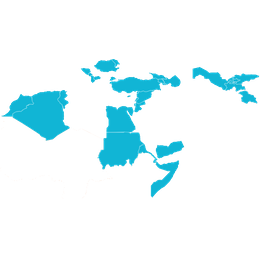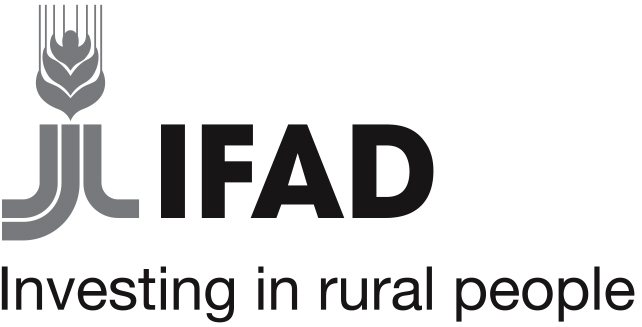Uniting smallholders to access value chains
"Sustainable collective action through technical and financial support."
BACKGROUND
A global trend towards high-value, strictly regulated produce means farmers in developing countries may be excluded from commercial value chains.
By grouping together as farmers' organizations (FOs), they can benefit from economies of scale, collective bargaining and new processes that add value to their products.WHAT’S INVOLVED
Value chain development (VCD)
Working together as farmers' organizations, smallholders can be recognized as part of large-scale commercial value chains. The FOs are large enough to work effectively with processors, intermediaries and customers operating on a commercial or enterprise scale.
Adding value to artisanal produce
By aggregating their produce, farmers can access better storage, bulk processing and refinements that would not be accessible to individuals. This improves product quality, potentially opening up new markets.
Collective bargaining
A by-product of FOs is their value in representing farmers' interests. Being part of an FO can help farmers negotiate better prices with private companies.
EXPLORE THIS SOLUTION
This project can offer
- a successful model for sustainable collective action through technical and financial support
- valuable experience in scaling up knowledge sharing as a way to strengthen value chains
- Real results; so far, 12 per cent more smallholders have been integrated into value chains and productivity has increased by 10 per cent as a result of this programme.

Countries involved
Armenia, Georgia, Kazakhstan and Moldova
Share this solution
Bookmark this solution
BookmarkShow Full Solution
Summary
Countries of the former Soviet Union are typically characterised by small land-size holdings, low inputs and low outputs/productivity. Smallholder farmers are the main unit of agricultural production, providing around 70 per cent of the agricultural output and on average, 50 per cent of the labour force.
A value chain development (VCD) approach was adopted in Armenia, Georgia, Kazakhstan and Moldova. VCD is a promising strategy for improving rural populations’ incomes and livelihoods, commercializing smallholder production by helping link producers to processors and markets.
Farmers’ organizations (FO) enable the participants to achieve economies of scale for procuring inputs. As a group, they can reduce produce collection costs, minimize transaction costs, and add value to their produce through processing and better handling and storage. FOs can also help producers overcome asymmetrical relationships within their value chains.
Challenge
With the advent of higher standards, traceability requirements, and demand for consistency in quantity and quality of horticultural crops, it is increasingly clear that smallholders in the targeted countries are at risk of being marginalized. Individually, smallholders are placed at a disadvantage, as there are often significant economies of scale in complying with the requirements. They are also lacking information on changing market conditions. Many buyers in the value chain may refuse to deal with smallholders given the high transaction costs.
To improve this situation, two challenges need to be met:
- Developing an effective approach for agricultural transformation that is sustainable, cost-effective, and minimizes risks for famers.
- Improving incomes by increasing smallholders’ integration into value chains while supporting sustainable collective action.
Solution
Farmers’ collective actions and initiatives are considered to be one of the most effective approaches to poverty reduction and market access in post-Soviet countries. They can also be extremely effective in representing farmers’ interests and improving their bargaining power with private companies.
The project, which has a duration of 36 months, aims to design, develop and replicate horticultural value chains and to achieve three main goals;
1. Increased awareness and learnings from collective action experiences
The first component involves mapping various collective action groups and approaches supported by IFAD and other organizations, by researching
- socio-economic and environmental conditions that enable farmers to engage in collective action
- potential partnerships for knowledge transfer in agriculture, and
- success stories on collective actions.
This will efficiently facilitate policies and intervention entry-points, enabling collective action for market access.
2. Enhanced capacities of smallholders for strengthening value chain integration
In this phase, the project assesses the needs of the selected beneficiaries and prepares capacity development and value chain strengthening activities, then implements the capacity development program and puts beneficiaries into collective non-formal groups.
There are around 10 groups of farmers in each country who will receive support. Direct beneficiaries include at least 800 poor smallholders from the four targeted countries (approximately 200 from each country). Of these 800, 40 per cent will be women and 35 per cent will be under age 35.
There is a diverse range of crops for inclusion in the value chain, including fruits, berries, table grapes, nuts, vegetables and herbs. The most important factor is that these will be high-value cash crops.
3. Adoption of successful pilot models
The pilot groups that have been supported by grants are assessed to determine which have performed best. The project will then design a specified technical assistance plan to each of the selected groups, in the form of a horticultural service hub which will offer technical, managerial and marketing expertise.
A regional platform will be developed for sharing the experience, networking and project results of the four countries and disseminating best practices through international forums, workshops etc.
Overcoming the challenges could create enhanced marketing opportunities in the Russian market, the broader Eurasian Economic Union, and the EU, improving smallholders' livelihoods.
Results
Although a promising start has been made under this grant, after just one year of implementation it is too early to conclusively assess overall outcomes. However, some of the more specific results include:
- 12 per cent increase in the incomes of the smallholders integrated into a value chain
- 6,000 stakeholders, including smallholders, acknowledged and learned from collective actions in the sub-regions
- Policies for promoting the farmer’s collective actions improved
- Productivity increased by 10 per cent due to improved capacities and knowledge
- 15 pilots integrated into profitable value chains due to technical support and investments
- 15 pilots invested $300,000 in the horticulture marketing channels
- Establishment of a regional platform for joint learning and information sharing
Lessons learned and potential for replication
- Irrespective of the VCD model being fostered (producer-driven, buyer-driven, intermediary-driven or other), some sort of organization of farmers is required in order for their integration in the VCs to be viable and sustainable.
- There is considerable scope for scaling up proven South-South Cooperation approaches that are cost-effective in sharing development solutions and enhancing capacities.
- The exchange and sharing of development solutions between participating countries is an effective way to strengthen value chain development, providing practical guidance and support to ensure high quality knowledge sharing (exchanges, joint learning routes and guidance, study tours and training).
- Fostering knowledge management and effective networking can be best achieved by connecting regional extension providers and beneficiaries (forums, conferences), scaling up knowledge sharing and enhancing two-way learning among a wide range of actors from participating countries.
- Scaling up can lead to deterioration of the producers’ bargaining situation if the competition at the tail end of the chain increases without additional options to sell further upstream.
Next steps
Further testing of the measures launched during the first year of the 3 year implementation period. A proper evaluation process will be essential to measure the impact of the various actions.
Last update: 09/08/2018

